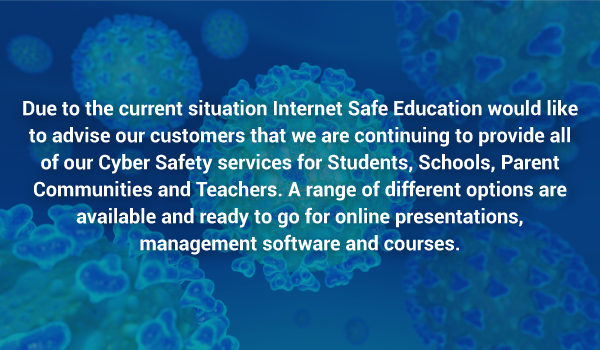Sexual Extortion or ‘Sextortion’ is a serious form of image-based abuse. Sextortion is threatening to publicly reveal images, video, or personal communications of a sexual nature to extort money or more sexually explicit content. The predator may be a stranger or someone you know.
In a recent study, The Digital Lives of Aussie Teens (2021), conducted by the eSafety Commissioner it was revealed that the most prevalent negative online experience children from the ages of 12-17 years face is being contacted by a stranger (30%) followed by receiving inappropriate content (20%) or online threats or abuse (15%). Similarly in the United States the National Survey of U.S. Youth (2020) identified that 5% of children aged 12–17 were the victim of sexual extortion. Since the start of the pandemic, in Australia and the United States, we are seeing a worrying trend in predators targeting the 8–10 year demographic with social media and gaming being the most high-risk platforms for predators to target children and teenagers. Often, predators will pose as a child sharing similar interests and mirroring age-specific language. They will use incentives like gaming tips, gifts, money, things that are attractive, to build trust and befriend the victim. This is called grooming. Then it is likely, once a relationship is formed the tone may change very quickly.
What are the warning signs?
- Does their profile look fake? Does something not seem right about who they say they are?
- Are they asking a lot of personal questions about identity, location, school, or information about family?
- Their language changes and they try to convince you to move you away from the platform you met one that is more private
- They start to use more sexual language or are more forceful
- They want to video call and make requests that are uncomfortable and different to previous communications
- They say they don’t have a working camera to avoid making face to face contact and will often send an image
Types of Sexual Extortion
The methods in which a predator can obtain sexually explicit content to use to sexually extort a victim can be requested or illegally obtained in the following ways:
- The predator will encourage the victim to send nude photos or to join a sexually explicit video call and record or take screenshots of the victim
- The predator obtains your photo and alters it to make it appear sexual in nature. This is called a Deepfake.
- They claim to have a sexually explicit image or video of the victim but do not
- They can hack the victim’s photo or video files to obtain illegally
- It could be an ex-partner using photos or videos taken consensually during the course of a relationship to coerce
- An image or video recording can be taken of you in secret either in your home, in a public toilet or a changeroom
Remember, even if you act on the requests to send images or money, you are not to blame, you are the victim of a crime at the hands of a predator, known or unknown.
Take Action
If your child has fallen victim to sextortion or has been contacted by a stranger online here are some actions they can take to protect themselves.
Say No
No matter what anyone says, friend, acquaintance, or complete stranger, you don’t have to accept friend requests if you don’t know them. You also do not have to accept a video chat just because the other person calls. If you do it’s best to keep your camera off until you can confirm the identity of the person. You also can say no when someone asks for any type of photo or video even if they are threatening you.
Do not submit to the predators request monetary or images.
Do not send money or images even if you are scared what will happen. Their requests will escalate and it’s best not to engage at all
Seek Help
Confide in your parents, a trusted adult, your friends or even an officer of the law. They will be able to provide you with support and guidance on how to best resolve the issue
Collect evidence
It’s important to record all evidence of contact with the predator. That means website URLS, Account addresses, User Profiles, Dates & time of contact, Comments & Messages received. Take screenshots or recordings of conversations.
Block all further contact
Whether you are on social media, chat sites or online gaming you have the ability to block individuals quickly and easily. Predators can be persistent so be careful of new friend requests coming through as they may have assumed another identity. If you have been in contact via email or phone you can block contacts, or you may consider closing down email accounts temporarily as you go through the reporting process.
Report it
The first port of call is to report the sexual extortion to the platform you have had the experience. They all have a reporting option and should be in contact within 48 hours.
Secondly, report to eSafety Commissioner and the Australian Centre to Counter Child Exploitation (ACCCE)
If you feel that you or your child are in immediate danger, please contact the Police on 000 or your local police station.
It can be distressing to find out that someone you love has become a victim of sextortion but the more open discussion around online safety you have in your household the better equipped families are to face the negative experiences online.



